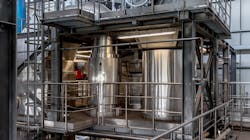EPA proposes more stringent toxic emission standards for certain types of industrial boilers
LENEXA, Kan. — The U.S. Environmental Protection Agency (EPA) has proposed amendments to the 2013 National Emission Standards for Hazardous Air Pollutants (NESHAP) for Industrial, Commercial, and Institutional Boilers and Process Heaters. These amendments would further reduce toxic emissions from certain types of units and represent continued clean air progress made by the Trump Administration. This rule – known as the Boiler MACT – establishes emission standards for categories of boilers based on the maximum achievable control technologies (MACT).
“America’s air quality is the cleanest it’s been in modern history, and these amendments will reduce emissions of hazardous air pollutants even more. With this action, we are proposing updated standards to limit emissions of hazardous air pollutants from certain industrial boilers. This underscores the Trump Administration’s commitment to reducing air pollution, while providing needed clarity to the regulated community,” said EPA Administrator Andrew Wheeler.
The proposed updated standards address deficiencies identified by the U.S. Court of Appeals for the D.C. Circuit and align them with requirements in the Clean Air Act. In response to the three remands, EPA is proposing:
· To revise 34 (of 90) emission limits for certain types of new and existing boilers;
· An updated rationale for using carbon monoxide (CO) as a surrogate for controlling organic hazardous air pollutants (HAPs); and
· An updated rationale for our original determination that setting a CO standard below 130 parts per million would not provide any additional organic HAP reduction.
The proposed amendments would continue to reduce emissions of HAPs – including mercury, formaldehyde, benzene, and polycyclic organic matter.
EPA will accept comment on this proposed action for 60 days after it is published in the Federal Register.
Background
Boilers are combustion devices used to generate steam or hot water for on-site use in certain industrial plant operations. Boilers may emit a wide variety of air pollutants, and EPA estimates that there are approximately 444 boilers subject to the emission standards being revised. Of the units covered by these proposed standards, EPA estimates 33 would need to take steps to further reduce emissions. The Boiler MACT does not cover large steam electric generating units operated by electric utility companies. A different NESHAP applies to those boilers.
